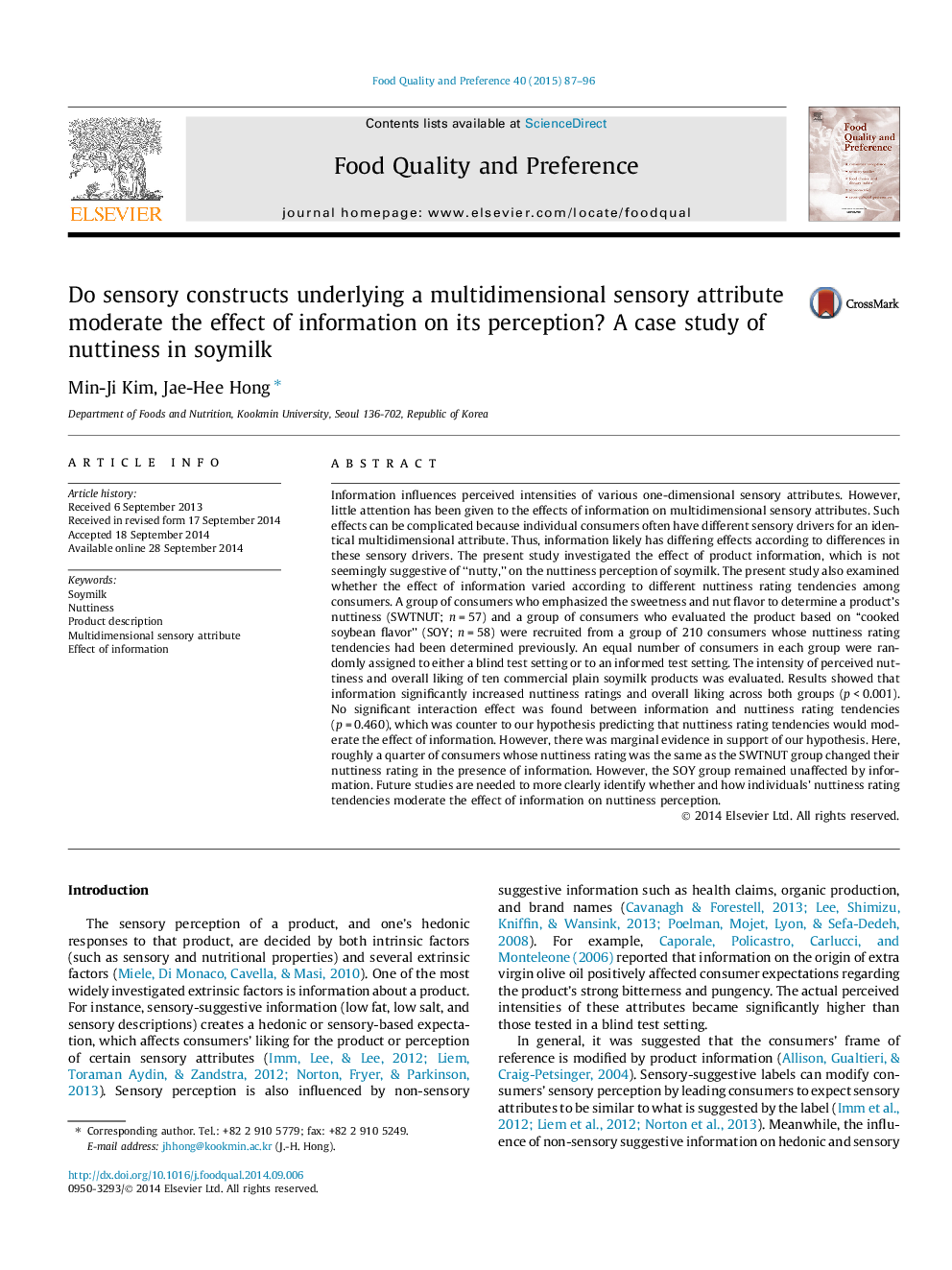| Article ID | Journal | Published Year | Pages | File Type |
|---|---|---|---|---|
| 4317066 | Food Quality and Preference | 2015 | 10 Pages |
•Product information enhanced nuttiness and liking ratings of soymilk.•Consumers were segmented into 2 clusters with different nuttiness rating tendencies.•A group of consumers weighed sweetness and nut flavor when evaluating nuttiness.•The other group weighed cooked soybean flavor more when evaluating nuttiness.•Nuttiness rating tendencies did not moderate the effect of product information.
Information influences perceived intensities of various one-dimensional sensory attributes. However, little attention has been given to the effects of information on multidimensional sensory attributes. Such effects can be complicated because individual consumers often have different sensory drivers for an identical multidimensional attribute. Thus, information likely has differing effects according to differences in these sensory drivers. The present study investigated the effect of product information, which is not seemingly suggestive of “nutty,” on the nuttiness perception of soymilk. The present study also examined whether the effect of information varied according to different nuttiness rating tendencies among consumers. A group of consumers who emphasized the sweetness and nut flavor to determine a product’s nuttiness (SWTNUT; n = 57) and a group of consumers who evaluated the product based on “cooked soybean flavor” (SOY; n = 58) were recruited from a group of 210 consumers whose nuttiness rating tendencies had been determined previously. An equal number of consumers in each group were randomly assigned to either a blind test setting or to an informed test setting. The intensity of perceived nuttiness and overall liking of ten commercial plain soymilk products was evaluated. Results showed that information significantly increased nuttiness ratings and overall liking across both groups (p < 0.001). No significant interaction effect was found between information and nuttiness rating tendencies (p = 0.460), which was counter to our hypothesis predicting that nuttiness rating tendencies would moderate the effect of information. However, there was marginal evidence in support of our hypothesis. Here, roughly a quarter of consumers whose nuttiness rating was the same as the SWTNUT group changed their nuttiness rating in the presence of information. However, the SOY group remained unaffected by information. Future studies are needed to more clearly identify whether and how individuals’ nuttiness rating tendencies moderate the effect of information on nuttiness perception.
